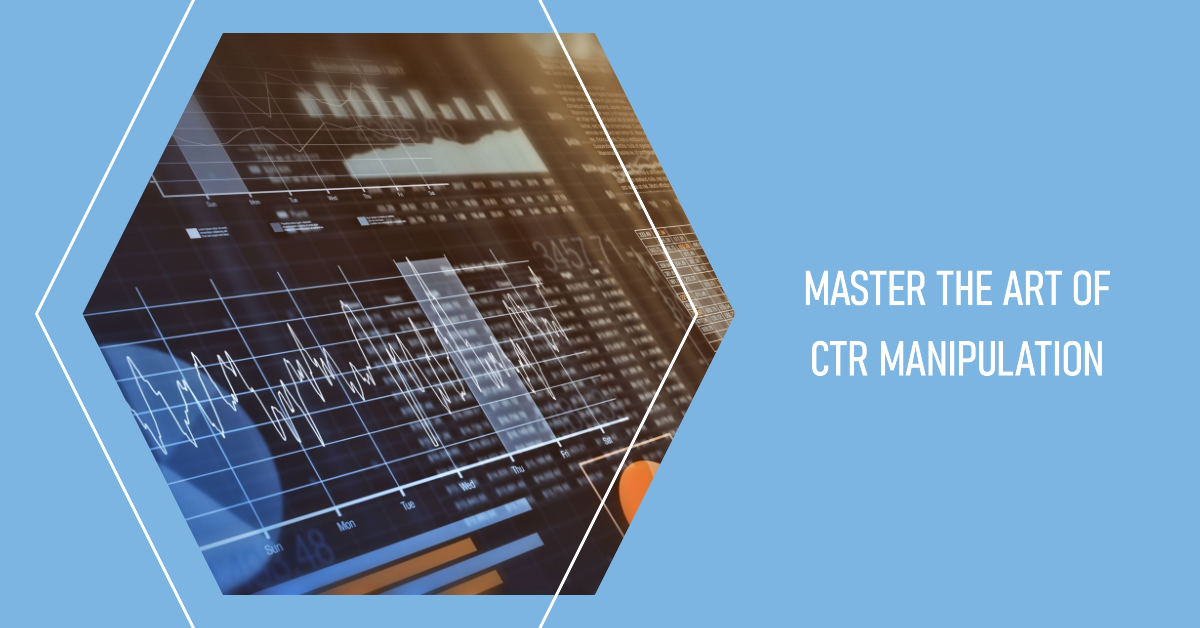CTR Control: Your Key to Unlocking Higher Rankings
In the affordable landscape of search engine optimization, click-through price (CTR) acts as an important metric that can significantly influence your positions. By purposefully adjusting CTR, you can enhance customer engagement and exposure for your content. Strategies such as enhancing meta summaries and using rich bits can bring about significant enhancements. Nevertheless, the performance of these methods hinges on a balanced strategy that considers honest ramifications. What are the prospective mistakes of prioritizing CTR, and exactly how can you navigate them while attaining your wanted end results?
Understanding Click-Through Rate
Understanding click-through price (CTR) is crucial for reviewing the performance of on-line advertising and marketing approaches. CTR is specified as the ratio of users who click a details web link to the complete variety of individuals who view a page, e-mail, or advertisement. It serves as a key efficiency sign (KPI) that offers understandings right into how well material reverberates with the target audience.
A high CTR indicates that the web content is appealing and engaging, prompting customers to act. Conversely, a reduced CTR might recommend that the web content is not successfully catching passion or that the call-to-action (CTA) does not have clearness. Marketers typically track CTR throughout different networks, including social media, email projects, and pay-per-click marketing, to assess the effect of their techniques.

Relevance of CTR in SEO

Online search engine, especially Google, use CTR as a ranking aspect due to the fact that it mirrors user engagement and complete satisfaction. When a web site continually achieves a high CTR, it suggests that its content effectively meets the needs of searchers. Search engines might award such sites with improved positions, therefore enhancing presence and bring in even more organic traffic.
Furthermore, CTR has implications for total electronic marketing strategies. A solid CTR not just drives web traffic but additionally boosts brand name recognition and trustworthiness. As companies remain to complete for on the internet visibility, understanding and maximizing CTR comes to be extremely important. In recap, prioritizing CTR in search engine optimization methods is vital for achieving and keeping higher positions in a progressively affordable digital landscape.
Techniques for CTR Control
Several efficient strategies can be used to control click-through prices (CTR) in a method that boosts a web site's visibility in internet search engine results. To start with, optimizing meta titles and summaries is essential; engaging, appropriate, and keyword-rich snippets can dramatically attract customers to click. Incorporating numbers, concerns, or strong contact us to action can additionally visit this web-site boost engagement.
Secondly, leveraging rich snippets, such as star ratings and testimonial matters, can make search results much more aesthetically enticing and credible. These attributes not only stand out yet likewise share added details that might influence individual decisions.
Thirdly, targeting long-tail keywords can cause higher CTR, as they normally draw in much more inspired customers looking for particular options. This concentrated technique commonly leads to an extra appropriate audience, boosting the possibility of clicks.
Furthermore, A/B screening different headings and descriptions enables data-driven decisions, enabling marketing professionals to improve their approaches based upon check these guys out actual performance metrics. Finally, creating top notch, appealing content that lines up with customer intent makes sure that once site visitors land on the web page, they are more probable to discover additionally, thereby improving total site engagement and reputation.
Gauging CTR Performance

Evaluating CTR includes not just gathering data but additionally translating it in the context of details goals and benchmarks. A high CTR may show engaging advertisement copy or an attractive deal; nevertheless, it has to be gauged together with conversion prices to understand the actual impact on company purposes. Additionally, segmenting CTR information by demographics, gadgets, and web traffic resources can introduce insights into audience habits and choices, enabling marketers to fine-tune their methods.
Consistently keeping track of CTR patterns gradually is important for determining patterns or anomalies that might require adjustments in methods. By comprehending and measuring CTR effectiveness, online marketers can improve their projects, boost customer involvement, and eventually drive greater rois.
Moral Considerations in CTR Techniques
Browsing the landscape of click-through price (CTR) strategies calls for an eager awareness of ethical considerations that can considerably affect both brand name credibility and customer trust fund. As businesses seek to improve their online visibility, the temptation to adjust CTR via misleading techniques can arise. Such methods may consist of clickbait headlines, misleading advertisement positionings, or unnaturally pumping up CTR with robots or incentivized clicks. These methods might produce short-term gains, they posture considerable risks in the lengthy run.
Moral CTR methods should focus on transparency and credibility. right here Consumers today are progressively discerning; they value real interactions and are most likely to support brands that promote stability. Taking part in moral practices not just fosters trust fund yet also boosts brand commitment, ultimately leading to sustainable development.
Additionally, search engines are advancing to identify and penalize manipulative actions. A dedication to ethical CTR techniques can, for that reason, protect versus mathematical fines, guaranteeing long-lasting exposure and credibility in search rankings. To conclude, the search of greater CTR need to be balanced with ethical considerations, lining up service purposes with the basic principles of honesty and respect for consumers.
Conclusion
Finally, Click-Through Rate (CTR) control functions as an essential strategy for improving internet search engine rankings by improving individual involvement. Using strategies such as maximized meta titles, abundant snippets, and targeted long-tail key phrases can dramatically raise CTR (GMB CTR Manipulation). The relevance of moral factors to consider can not be overemphasized, as openness and credibility are critical for keeping customer trust fund. By stabilizing efficient CTR approaches with moral methods, it is possible to accomplish sustainable development in search visibility and user interaction.